- Clone
- QA19A16 (See other available formats)
- Regulatory Status
- RUO
- Other Names
- GHI/61, M130, RM3/1, p155, Hemoglobin/Haptoglobin Complex Receptor, macrophage-associated antigen, ED2(rat)
- Isotype
- Mouse IgG1, κ
- Ave. Rating
- Submit a Review
- Product Citations
- publications

-

Human paraffin-embedded liver tissue slices were prepared with a standard protocol of deparaffination and rehydration. Antigen retrieval was done with Citrate buffer 1X pH 6.0 at 95°C for 40 minutes. Tissue was washed with PBS/ 0.05% Tween20 twice for five minutes, blocked with 5% FBS and 0.2% gelatin for 30 minutes. Then, the tissue was stained with 10 µg/mL of purified anti-human CD163 (clone QA19A16) at 4°C overnight. On the next day, the tissue was washed twice with PBS and stained with goat anti-mouse secondary antibody (Poly4053) Alexa Fluor® 594 (red) for two hours at room temperature. The nuclei were counter staining with DAPI (blue). The image was scanned with a 10X objective and stitched with software. -

Human lysed washed blood stained with CD163 (clone QA19A16) purified (filled histogram) or mouse IgG1, κ isotype control (clone MOPC-21) purified (open histogram) followed by anti-mouse IgG PE. -

SeqIF™ (sequential immunofluorescence) staining on COMET™ of Purified anti-CD163 (clone QA19A16, yellow) on formalin-fixed paraffin-embedded human tonsil tissue at 5 µg/mL. Alexa Fluor™ Plus 647 Goat anti-Mouse IgG antibody (Lunaphore, Cat. No. DR647MS) was used as a secondary antibody. Nuclei were counterstained with DAPI (blue). Tissue underwent an all-in-one dewaxing and antigen retrieval preprocessing.
| Cat # | Size | Price | Quantity Check Availability | Save | ||
|---|---|---|---|---|---|---|
| 364302 | 100 µg | $118 | ||||
CD163 is a member of the group B scavenger receptor cysteine-rich superfamily, also known as GHI/61, M130, RM3/1, p155, hemoglobin-haptoglobin complex receptor, or macrophage-associated antigen. It is a 134 kD (non-reduced)/155 kD (reduced) glycoprotein primarily expressed on macrophages, Kupffer cells, monocytes, a subset of dendritic cells, and a subset of hematopoietic stem/progenitor cells. CD163 binds to haptoglobin-hemoglobin complex and TWEAK, and plays a role in clearing hemoglobin and regulating cytokine production by macrophages. Membrane CD163 can be cleaved by metalloproteinases (MMP), resulting in a soluble form. Elevated serum level of sCD163 has been implicated in many kinds of inflammatory diseases.
Product DetailsProduct Details
- Verified Reactivity
- Human
- Antibody Type
- Recombinant
- Host Species
- Mouse
- Formulation
- Phosphate-buffered solution, pH 7.2, containing 0.09% sodium azide
- Preparation
- The antibody was purified by affinity chromatography.
- Concentration
- 0.5 mg/mL
- Storage & Handling
- The antibody solution should be stored undiluted between 2°C and 8°C.
- Application
-
FC - Quality tested
IHC-P - Verified
SB - Community verified - Recommended Usage
-
Each lot of this antibody is quality control tested by immunofluorescent staining with flow cytometric analysis. For flow cytometric staining, the suggested use of this reagent is ≤ 0.5 µg per million cells in 100 µL volume. For immunohistochemistry, a concentration range of 5.0 - 10.0 µg/mL is suggested. It is recommended that the reagent be titrated for optimal performance for each application.
- Additional Product Notes
-
For the use of this antibody in spatial biology applications, we have partnered with Lunaphore Technologies for demonstration of our antibodies on the COMET™. The COMET™ platform is an automated, end-to-end spatial biology solution developed for rapid and flexible multiplex tissue profiling. More information on the COMET™ and a complete list of our antibodies that have been demonstrated on the COMET™ can be found here.
- RRID
-
AB_2892439 (BioLegend Cat. No. 364302)
Antigen Details
- Structure
- 134 kD (non-reduced)/155 kD (reduced) glycoprotein, scavenger receptor superfamily
- Distribution
-
Monocytes, macrophages, Kuffer cells, subset of dendritic cells, subset of hematopoietic stem/progenitor cells
- Function
- Clearance of haptoglobin-hemoglobin complex, regulation of cytokine production by macrophages
- Ligand/Receptor
- Haptoglobin-hemoglobin complex, TWEAK
- Antigen References
-
- Roth J, et al. 1994. Transolantation. 57:127
- Van den Heuvel MM, et al.1999. J Leukoc Biol. 66:858
- Sulahian TH, et al. 2000. Cytokines. 12:1312
- Fabriek BO, et al. 2007. J Neuroimmunol. 187:179
- Gene ID
- 9332 View all products for this Gene ID
- UniProt
- View information about CD163 on UniProt.org
Related Pages & Pathways
Pages
Related FAQs
- If an antibody clone has been previously successfully used in IBEX in one fluorescent format, will other antibody formats work as well?
-
It’s likely that other fluorophore conjugates to the same antibody clone will also be compatible with IBEX using the same sample fixation procedure. Ultimately a directly conjugated antibody’s utility in fluorescent imaging and IBEX may be specific to the sample and microscope being used in the experiment. Some antibody clone conjugates may perform better than others due to performance differences in non-specific binding, fluorophore brightness, and other biochemical properties unique to that conjugate.
- Will antibodies my lab is already using for fluorescent or chromogenic IHC work in IBEX?
-
Fundamentally, IBEX as a technique that works much in the same way as single antibody panels or single marker IF/IHC. If you’re already successfully using an antibody clone on a sample of interest, it is likely that clone will have utility in IBEX. It is expected some optimization and testing of different antibody fluorophore conjugates will be required to find a suitable format; however, legacy microscopy techniques like chromogenic IHC on fixed or frozen tissue is an excellent place to start looking for useful antibodies.
- Are other fluorophores compatible with IBEX?
-
Over 18 fluorescent formats have been screened for use in IBEX, however, it is likely that other fluorophores are able to be rapidly bleached in IBEX. If a fluorophore format is already suitable for your imaging platform it can be tested for compatibility in IBEX.
- The same antibody works in one tissue type but not another. What is happening?
-
Differences in tissue properties may impact both the ability of an antibody to bind its target specifically and impact the ability of a specific fluorophore conjugate to overcome the background fluorescent signal in a given tissue. Secondary stains, as well as testing multiple fluorescent conjugates of the same clone, may help to troubleshoot challenging targets or tissues. Using a reference control tissue may also give confidence in the specificity of your staining.
- How can I be sure the staining I’m seeing in my tissue is real?
-
In general, best practices for validating an antibody in traditional chromogenic or fluorescent IHC are applicable to IBEX. Please reference the Nature Methods review on antibody based multiplexed imaging for resources on validating antibodies for IBEX.
Other Formats
View All CD163 Reagents Request Custom Conjugation| Description | Clone | Applications |
|---|---|---|
| Purified anti-human CD163 Recombinant Antibody | QA19A16 | FC,IHC-P,SB |
| Alexa Fluor® 594 anti-human CD163 Recombinant Antibody | QA19A16 | IHC-P |
| Alexa Fluor® 647 anti-human CD163 Recombinant Antibody | QA19A16 | FC,IHC-P |
| TotalSeq™-Bn1307 anti-human CD163 Recombinant Antibody | QA19A16 | SB |
Customers Also Purchased
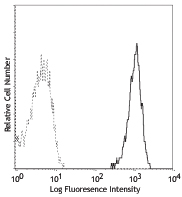
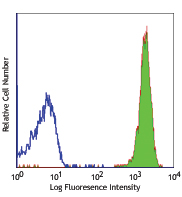

Compare Data Across All Formats
This data display is provided for general comparisons between formats.
Your actual data may vary due to variations in samples, target cells, instruments and their settings, staining conditions, and other factors.
If you need assistance with selecting the best format contact our expert technical support team.
-
Purified anti-human CD163 Recombinant Antibody
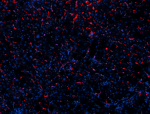
Human paraffin-embedded liver tissue slices were prepared wi... 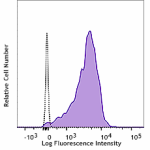
Human lysed washed blood stained with CD163 (clone QA19A16) ... 
SeqIF™ (sequential immunofluorescence) staining on COMET™ of... -
Alexa Fluor® 594 anti-human CD163 Recombinant Antibody
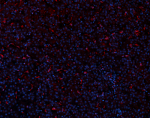
Human paraffin-embedded liver tissue slices were prepared wi... -
Alexa Fluor® 647 anti-human CD163 Recombinant Antibody
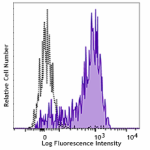
Human peripheral blood monocytes were stained with anti-huma... 
Human paraffin-embedded liver tissue slices were prepared wi... -
TotalSeq™-Bn1307 anti-human CD163 Recombinant Antibody

 Login/Register
Login/Register 





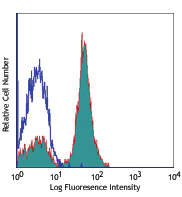



Follow Us